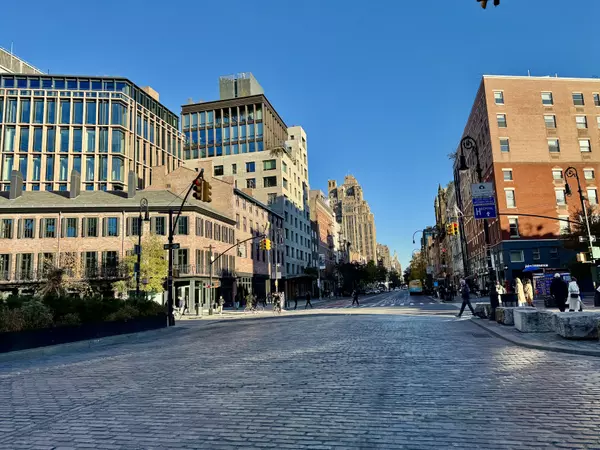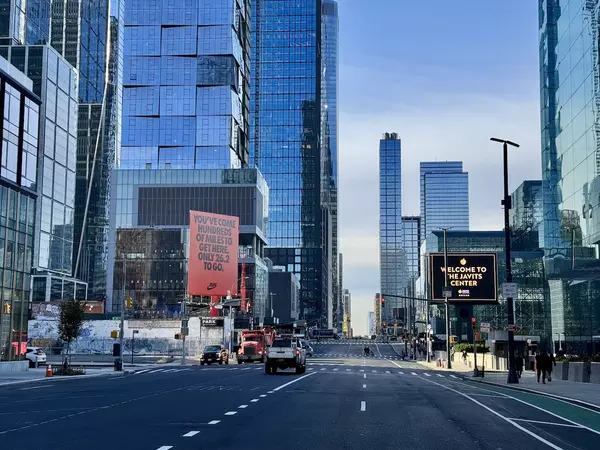Weekly Manhattan & Brooklyn Market: 2/7
Photo by Fabio Fistarol on Unsplash Week of 02/07/22 Manhattan inventory increased for the second week in a row after bottoming in mid-January and contract activity increased compared to the prior week. In Brooklyn, supply also increased while contract activity declined compared to last week. Pending sales have been decreasing in both boroughs as deals are closing faster than new contracts are signed. As a result of the increasing supply and declining number of pending sales, the market pulse has declined in recent weeks. Contract activity and pending sales are expected to begin increasing again in the next 4–6 weeks, which will lead the market pulse higher again. Despite the recent increases in supply, on the aggregate, the market remains supply constrained with decreasing negotiability and rising prices. Manhattan Supply increased 2% this week for the second time in 13 weeks to 5,041 units for sale, as supply rose above 5,000 units for the first time since Christmas. This week, 389 new listings came to market, an 8% decrease compared to last week and 28% more than the same week last year. Brooklyn Supply increased 3% to 2,413 units for sale this week, the fourth week in a row supply has increased after eleven weeks of declining supply. This week, 196 new listings came to market, a decrease of 9% from last week and 5% more than the same week last year. Manhattan Pending Sales decreased 2% to 4,095 this week. Brooklyn Pending Sales decreased 2% to 4,095 this week. Manhattan Contracts Signed — 269 contracts were signed this week, a 5% increase from last week and the same as last year. For the last five weeks, the contract activity pattern in Manhattan is very similar to that of a year ago. Brooklyn Contracts Signed — 159 contracts were signed this week, a 19% decrease from last week and a 11% increase from the same week last year. Manhattan Weekly Contract Analysis — Of the contracts signed this week, and based on the last asking price, the (a) median price per square foot was $1,491, (b) the median price was $1.15M and © the median size was 1,250 square feet. Brooklyn Weekly Contract Analysis — Of the contracts signed this week, and based on the last asking price, the (a) median price per square foot was $880, (b) the median price was $1.20M and © the median size was 1,241 square feet. New Development Insights This week, 85 new development contracts were reported within 62 buildings, a 47% increase from the 58 new development contracts reported last week. Manhattan’s and Brooklyn’s new development contract activity both increased to 46% of the contract volume while Queen’s contract volume decreased to 8% compared to last week. The following were the top selling new developments this week: One Manhattan Square in Two Bridges reported 6 new contracts. 81 India Street in Greenpoint reported 3 new contracts. The 101 in East Village reported 2 new contracts. Eastlight in Kips Bay reported 2 new contracts. 200 East 59th Street in Midtown reported 2 new contracts. 25 Park Row in Fulton Seaport reported 2 new contracts. Please contact me if you would like to learn more about these, or other new developments. We will continue sharing the Elegran Insights data analysis with you every week.
Quantifying Manhattan Residential Real Estate’s Catastrophe Resiliency
Photo by sebastiaan stam on Unsplash Manhattan real estate is both dense and vertical, two traits which can, unfortunately, amplify the damage to both life and property during a disaster. However, Manhattan real estate’s resiliency and recovery, in the face of catastrophe, is exceptional as we explore in the following case studies: As New Yorkers remember all too well, the attacks on the World Trade center occurred on September 11, 2001. As of year-end 2001, despite the trauma and fear that ensued, Manhattan’s average condo price per square foot had increased nearly 13% over the year prior. And even the Financial District (“FiDi”) which, of course, was the site of the terrible atrocity, had given back less than 11% of the prior year’s price/sf watermark. Over the course of the next seven years, Manhattan average price/sf doubled, while FiDi average price/sf increased by 161%. In January 2020, just before the words “Coronavirus” and “COVID” entered our vocabulary and the virus began it’s deadly onslaught on NYC, Manhattan median condo price per square foot had posted a month of solid gain. However, over the next 4-months, price/sf slid 18%, briefly breaking through the $1,400/sf support level established in the second half of 2019. And, after trading along that support level through Q1–2021, condo price/sf appreciated a dramatic 42% to finish out 2021. As these two unfortunate tragedies illustrate, Manhattan residential real estate (represented by condominium price/sf) dips modestly, recovers quickly and appreciates rapidly post-catastrophe. Please contact us if you would like to learn more… About Us Our goal is simple: to humanize the world of real estate. Michael Rossi founded Elegran in 2008 on the dual premise of motivation and innovation, with a third sustaining principle added over the years: care. Unique in the industry, the firm has quietly become a key player in the New York brokerage world. Elegran oversaw well over $500 million in sales volume in 2019, tripled market share in 2020 and sold $1B in 2021. Headquartered in the center of Manhattan, Elegran is solely dedicated to serving the incomparable needs of the New York City metropolitan region.
Elegran Brooklyn Market Update: February 2022
Photo by Magnus Andersson on Unsplash Overall Brooklyn Market Update: February 2022 Brooklyn Market Update In the first month of 2022, Brooklyn saw a much-needed increase in overall supply as new inventory came to market. Brooklyn for-sale supply increased 8.2% from last month while remaining nearly 25% lower than the same time last year. Buyer demand meanwhile remains robust, with a similar number of contracts signed in January as were signed in December, and 18% more contracts than were signed last January. Taken together, the market is seeing an increase in demand and a decrease in supply, which has led to a 60% increase in the Market Pulse as leverage has shifted further to sellers and away from buyers. From this shift in leverage, negotiability has decreased 38% and the median sales price has grown 5% over the last year. Additionally, similar to Manhattan, the luxury segment of the Brooklyn market is leading much of the demand surge, with contract activity in the $2–5M price range up 21% in the last month and up 86% in the last year. Brooklyn Supply increased by 8.2% in January to 2,359 homes available for sale with 946 new listings coming to market in January. A January increase in supply is seasonally normal and January’s new supply was 96% higher than in December and 3% higher than last January. INVENTORY: Key Takeaways Supply increased for the lower price points ($2M and below) and decreased for the higher price points ($5–10M and above). There was no change in the inventory level for homes priced $2–5M. Compared to last year, Brooklyn supply decreased by double digits across all price points except for those priced above $10M. Bed-Stuy continues to have the most inventory [140] compared to the other neighborhoods, followed by Downtown Brooklyn [101]. Park Slope and Williamsburg are tied for having the fewest listings [70]. Studio apartments accounted for the least amount of inventory available and 3+ bedrooms once again comprised the bulk of the market inventory. Brooklyn Buyer Activity, as measured by signed contracts, remained virtually unchanged in January with 729 contracts signed, compared to 733 in contracts signed in December. Compared to last year, contract activity is up 19%. CONTRACT ACTIVITY: Key Takeaways By price point, contract activity decreased across the lower price points ($2M and below), while increased across the higher price points ($2–10M and above) compared to last month. In the last year, contract activity increased significantly in the $2–5M and $5–10M range, while the under $1M price range saw a comparable level of contract volume from the prior year. The $1–2M price point had the highest number of contracts signed [226], followed by the $600K-1M price range in which 213 contracts were signed in January. By neighborhood, contract activity increased the most in Bed-Stuy [+55%], and decreased the most in Downtown Brooklyn by [-17%]. Bed-Stuy saw the greatest number of contracts signed this month [65]. Measured by bedroom count, the number of contracts signed this month decreased for studios[-30%] and increased the most for 1-bedrooms [+10%]. Over the last year, contract activity increased across the size ranges. Although buyer demand is consistently high, rising supply is driving down Brooklyn’s Market Pulse, as buyers have more choice and sellers have more competition. The Market Pulse dropped nearly 11% in Brooklyn this month to 1.22 and remains 60% higher than last year. The Market Pulse [a ratio between pending sales and supply] is an indicator of leverage between buyers and sellers. A Market Pulse below 0.4 is considered a buyer’s market, a Market Pulse between 0.4 and 0.6 is considered a neutral market and a Market Pulse above 0.6 is considered a seller’s market. MARKET PULSE: Key Takeaways Compared to last year, the market pulse increased across all price ranges, neighborhoods, and bedroom sizes, with the exception of homes priced above $10M which decreased 24%. The market pulse decreased in the lower price points ($2M and below) and increased in the higher price points ($2–10M and above) compared to last month. The Market Pulse is highest for the $600K-1M price range at 1.42, followed by the $1–2M price point at 1.4. Park Slope has the highest market pulse [2.41], followed by Williamsburg [1.91], which indicates the intense competition amongst buyers in those areas. Both neighborhoods had an increase insupply in the last month, contributing to their declining market pulse, while remaining among the highest. Downtown Brooklyn is a bit less competitive with a market pulse of 0.93, the only neighborhood with a Market Pulse below 1. The market pulse decreased across all bedroom sizes compared to last month. Pricing & Discounts The Median Sales Price in Brooklyn increased 1% from last month and increased 4.9% from last year to $962,500. On a price per square foot [PPSF] basis, the median increased 2% from last month and decreased 5% from last year to $965. MEDIAN PPSF: Key Takeaways The median price per square foot increased across all neighborhoods except for in Brooklyn Heights and Downtown Brooklyn compared to last month. While decreasing in Brooklyn Heights this month, the neighborhood has the highest median PPSF [$1,457]. The median price per square foot remained lower, by comparison, in Bed-Stuy at $958. By bedroom counts, the median PPSF decreased across studios and 1 bedroom apartments, and increased across 2–3+ bedroom units both compared to last month and year. The Median listing discount in Brooklyn increased this month, indicating slightly more negotiability for buyers, aligning with a decreasing market pulse. Despite the increase from last month, the current median listing discount is still low, at 2.9%. This is an increase of 7.4% from last month and a decrease of 38% from one year ago. MEDIAN LISTING DISCOUNT: Key Takeaways The median listing discount increased for coops and townhouses this past month, and condos remained unchanged. Townhouses continue to have the highest median listing discount [5.5%] and Condos have the lowest [1.2%]. By price point, the median listing discount increased for homes priced $2M and below, decreased for those priced between $2–5M, and was unchanged for the $5–10M and above price points. Park Slope had no change from last month and still has a negative median listing discount, [-0.5%], indicating that on the median, homes are selling for half a percent above the asking price. In regard to bedroom size, 2-bedroom homes have the least negotiability. What this means for… Buyers: The Market Pulse is declining as supply has increased, although buyer demand is remaining consistent. Inventory has increased in the sub $2M price points and has not increased yet in the higher price points. As new inventory comes on the market in the sub $2M price points, buyer leverage has increased slightly. The $2–5M and $5–10M price points saw a large increase in contract activity over the last month and year, while the under $2M price points saw a decline in contract activity in the last month. Park Slope and Williamsburg, two of the neighborhoods with the highest Market Pulse and lowest negotiability, also saw the largest increase in new inventory in the last month, potentially creating a window of opportunity for buyers. Mortgage interest rates are increasing, and are projected to increase throughout 2022, potentially spurring buyers to act sooner than later. Sellers: The “spring listing season” has accelerated and more sellers are coming to the market sooner, trying to capitalize on the first mover advantage to stand-out to buyers eager for new inventory. As supply increases, sellers will face increased competition for buyers from other sellers. Renters: Rents have increased significantly over the last year and are hitting new records. In the face of rising inflation and increased rent renewal rates, now can be an ideal time to consider buying rather than renting. Rental supply continues to decline as tenants are often choosing to renew their leases rather than move into a new rental. Tenants facing a lease renewal will experience rising rent prices and landlords unwilling to negotiate or offer concessions. Competition is fierce amongst prospective renters, with apartments often receiving multiple offers and frequently going to bidding wars. Investors: With attention on rising inflation, real estate offers a hedge against inflation. Rising rental rates and increasing cap rates are creating an incentive for investors to explore investment opportunities in Brooklyn. Please contact us if you would like to learn more… About Us Our goal is simple: to humanize the world of real estate. Michael Rossi founded Elegran in 2008 on the dual premise of motivation and innovation, with a third sustaining principle added over the years: care. Unique in the industry, the firm has quietly become a key player in the New York brokerage world. Elegran oversaw well over $500 million in sales volume in 2019, tripled market share in 2020 and sold $1B in 2021. Headquartered in the center of Manhattan, Elegran is solely dedicated to serving the incomparable needs of the New York City metropolitan region.
Recent Posts










Stay in the Know!
Sign up to receive our monthly newsletter
Share your contact info and we'll get in touch
- Contact Us
- info@elegran.com
- (212) 729-5712
- Media & Press
- marketing@elegran.com
- Recruitment
- careers@elegran.com


